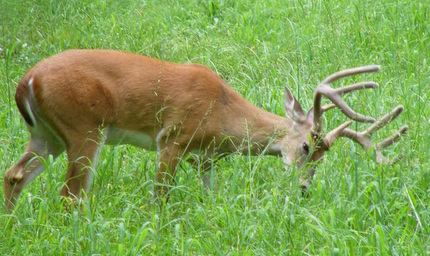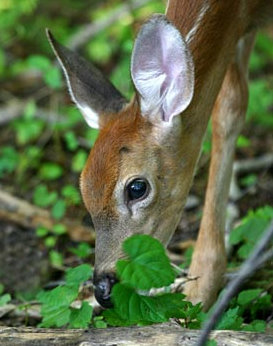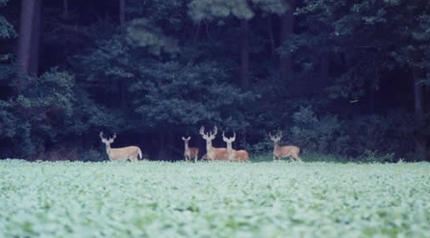What Foods do Deer Eat?
White-tailed deer are large animals. They require many pounds of food each day. Ever think to yourself, what do deer eat? Well, whitetail are ruminants like cows, but deer diet selection is much different than cows. Cattle are grass-roughage eaters, have a relatively large rumen compared to body size and depend heavily on grasses for their diet.
Grasses are low in crude protein and digestibility when compared to the items deer eat. Whitetail food sources include legumes, forbs (broadleaf weeds) and the new-growth of browse plants. To a white-tailed deer, browse consists of the leaves and twigs of trees, shrubs (brush) and vines. Forbs and browse plants have high protein levels, ranging up to 15-35% depending on time of year.
Deer Eat High Quality Foods
Because grass is relatively low in nutrition, grasses need a longer residence time in an animal’s rumen. Longer residence time increases rumen microflora (bacteria and protozoa) degradation and digestion of the forage. Thus, for grass-roughage eaters like cattle and sheep, residence time is quite long and rate of food passage is slow.
Deer can’t go slow! They have high physical demands for energy. Whitetail can not afford to carry around extra, dead-weight. Deer must remain lighter and faster. There is a predator around every corner in the woods. Instead, white-tailed deer focus only on the most palatable, most-easily digested food items found in their habitat. This ensures that they get the most energy possible with the lowest amount of food intake. Besides, eating takes energy and time. It’s difficult to watch for predators with your head down.
What do Deer Eat Then?
White-tailed deer are what people in the diet business call “concentrate selectors.” Their rumen is small relative to their body size. Deer simply cannot hold a lot of forage. As a result, their diet must be very high in nutritive value and capable of being rapidly degraded in the rumen. This makes for quick digestion.
Therefore, white-tailed deer rely primarily on the good stuff. Whitetail food sources consists of the best forb and browse plants that are found growing in their environment. These items are usually much higher in crude protein and digestibility than just about every species of grass.
Some forb plants that deer eat:
- Illinois bundleflower
- Deer pea vetch
- Lespedeza
- Euphorbia
- Patridge pea
- Spiderwort
- Wild carrot
Some browse plants that deer eat:
- Oaks
- Elms
- Hackberry
- Greenbriar
- Dogwoods
- Poison Ivy
- Grapevines
Deer Eat Little Grass
Grasses comprise only a very small part of the overall diet of the white-tailed deer. Often, it’s less than 10 percent. I think this important to point out because so often I hear people say, “The deer have so much grass to eat.” Yes, you may see deer in a field, but it is not the grass they are eating. Instead, deer search for interspersed forbs/weeds that are much easier for them to digest. Furthermore, these food items are loaded with protein.
Warm season perennial grasses supply livestock with most of their nutrients. These items will not meet the nutrient and consumption requirements of white-tailed deer. In fact, a white-tailed deer will not survive in a field of grasses. A whitetail will literally starve to death with a belly full of grass.
Whitetail do eat some grass. However, deer only consume grasses that are rapidly degraded in the rumen. These include the small grains and ryegrass that are used to any extent by deer. This is why winter food plots for white-tailed deer containing these cereal grains and grasses can work. Other useful introduced forages include both warm and cool season legumes. Most hunters know them as clovers. Deer will use small grains and legumes, but they still cannot comprise a deer’s entire diet.
Some grass plants that deer eat:
- Canada wildrye
- Green sprangletop
- Little bluestem
- Silver bluestem
- Rescuegrass
Deer Eat A Diversity of Foods
As you can see, it takes diverse plant communities to meet a deer’s dietary needs. Healthy deer make for a healthy deer herd. Furthermore, diverse whitetail food sources grow big-bodied deer. Big-bodied bucks grow big antlers, too. Good habitat is key. Supplemental feeding will ensure good body condition during periods of low rainfall.
Deer are very selective feeders so they require a diverse environment. It takes a diverse diet for whitetail to remain healthy. As a result, white-tailed deer prefer high quality habitat. It takes active habitat management to continually create whitetail food sources.
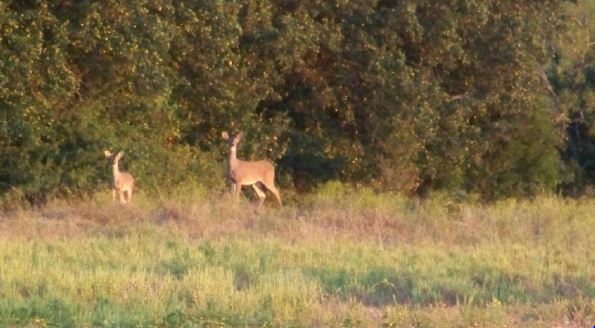
For several reasons, deer are often observed feeding along field edges. First, deer are very difficult to see in dense woods so we rarely see them there. They spend time in dense woods but these areas often lack food sources. Second, there is always a greater diversity of food available at the intersection of field and the edge of a woodland. This is because forb diversity is low in woodlands, but browse diversity is low in grasslands. Put them together and you have a deer buffet! So, what do deer eat in these transition zones? Go to the edge of the wood line and you can see for yourself. Evidence of deer browsing can be found on palatable browse plants.
More Resources on Deer Diet
- What do deer eat and why?
- Foods of Northern Deer
- Deer Feeding Habits in Missouri
- Whitetail Food Habits Central Texas
Diet: What do Deer Eat?
A complete list of native plants used by white-tailed deer includes browse, forbs, soft and hard mast (fruits, acorns), and mushrooms. Again, deer are not classified as grazers. Rather, whitetail a are commonly referred to as browsers. Each day, a deer’s mission is to get high quality food with as little effort as possible.
Some mast that deer eat:
- Acorns
- Pecans
- Persimmons
- Dewberries
- Hackberries
Forbs and mast, while providing good nutrition, may not be available in abundance every year or at certain times of the year. Forbs are often most numerous during the rainy seasons such as during the spring and fall. Deer will consume these readily when available because they have very high protein levels.
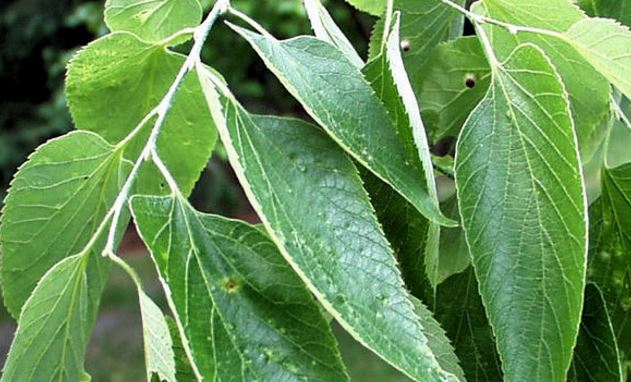
Browse plants tend to be more stable from year to year. Consequently, browse plants are the “bread and butter” of a deer’s diet. Again, browse plants are trees, shrubs and vines. These types of plants are deeply rooted and can persist through the summer. When natural foods are low during the winter, deer will also eat old, dead leaves directly off the forest floor. They are low in nutrition at this point, but they may be the best food available to them at that time.
In closing, whitetail food sources can be classified into several categories. However, browse is the most important source of deer nutrition because of its year-round availability. Important browse plants include green briar, poison ivy, grape vines, honeysuckle, hackberry, elm species, oak species and a variety of other trees and shrubs that are palatable in the area/region where the deer live.
